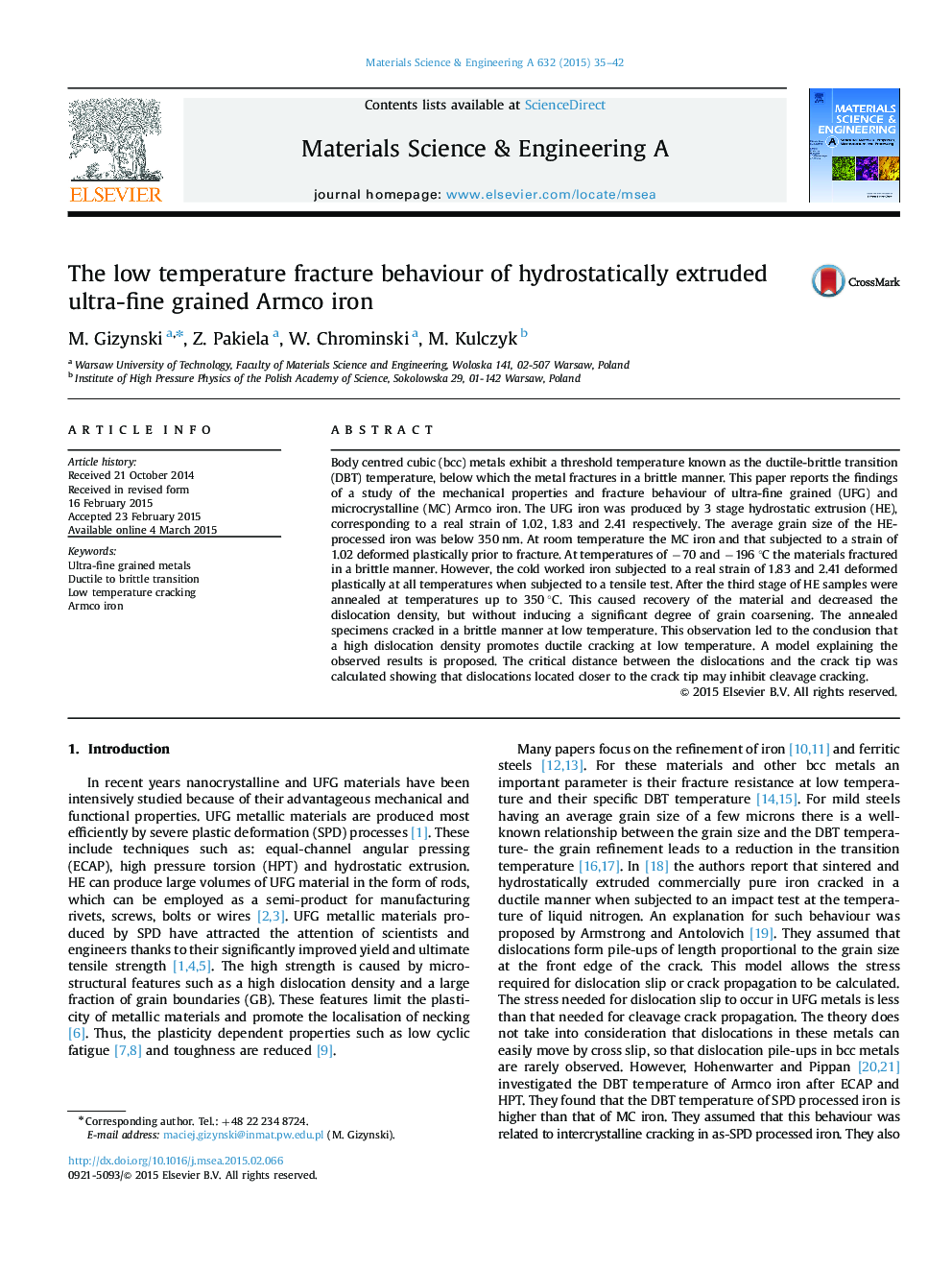| Article ID | Journal | Published Year | Pages | File Type |
|---|---|---|---|---|
| 1574346 | Materials Science and Engineering: A | 2015 | 8 Pages |
Body centred cubic (bcc) metals exhibit a threshold temperature known as the ductile-brittle transition (DBT) temperature, below which the metal fractures in a brittle manner. This paper reports the findings of a study of the mechanical properties and fracture behaviour of ultra-fine grained (UFG) and microcrystalline (MC) Armco iron. The UFG iron was produced by 3 stage hydrostatic extrusion (HE), corresponding to a real strain of 1.02, 1.83 and 2.41 respectively. The average grain size of the HE-processed iron was below 350 nm. At room temperature the MC iron and that subjected to a strain of 1.02 deformed plastically prior to fracture. At temperatures of −70 and −196 °C the materials fractured in a brittle manner. However, the cold worked iron subjected to a real strain of 1.83 and 2.41 deformed plastically at all temperatures when subjected to a tensile test. After the third stage of HE samples were annealed at temperatures up to 350 °C. This caused recovery of the material and decreased the dislocation density, but without inducing a significant degree of grain coarsening. The annealed specimens cracked in a brittle manner at low temperature. This observation led to the conclusion that a high dislocation density promotes ductile cracking at low temperature. A model explaining the observed results is proposed. The critical distance between the dislocations and the crack tip was calculated showing that dislocations located closer to the crack tip may inhibit cleavage cracking.
